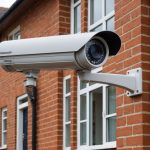Overview of Legal Requirements for CCTV Installation in the UK
When considering CCTV installation in the UK, it’s essential to understand the legal requirements involved. The Data Protection Act (DPA) and General Data Protection Regulation (GDPR) are central to these regulations. These laws ensure that personal data collected via surveillance is used responsibly, mandating that individuals’ privacy is respected.
The Information Commissioner’s Office (ICO) provides guidelines for compliance. These emphasize the importance of a clear purpose for surveillance, ensuring that data is used solely for legitimate reasons. You must also conduct an impact assessment to evaluate potential effects on individuals’ privacy.
Also to see : Navigating the Legal Maze: Converting UK Outbuildings into Independent Rental Units
Another critical requirement is notification and signage. Installing a CCTV system without informing those under surveillance may infringe on privacy rights. Hence, prominently displayed signs indicating surveillance presence are necessary. This transparency helps build trust and reduces privacy violations.
Using CCTV must balance security needs with privacy rights. Ensuring compliance with these regulations not only safeguards individual rights but also protects organisations from legal repercussions. Understanding and implementing these surveillance regulations is crucial for responsible CCTV operation in today’s digital landscape.
Also read : Safe and Effective Non-Toxic Pest Control Solutions for Your Family Home in the UK
Specific Considerations for Semi-Detached Homes
When installing CCTV systems in semi-detached homes, it is crucial to assess shared boundaries and sightlines. Positioning cameras requires careful planning to avoid infringing on neighbour’s privacy. Shared walls and yards mean that your camera may inadvertently capture footage from adjacent properties.
Privacy Considerations
Respecting neighbor privacy is key. Aim to adjust camera angles so they focus solely on your property. This is not just courteous but may also be legally necessary. Ensure your systems have customizable zones to mask sections that extend beyond your boundaries.
Mitigating Risks
To mitigate risks, consider the following strategies:
- Placement: Install cameras high enough and angling them down to reduce visibility into neighbouring properties.
- Zoning features: Use advanced zoning features available in many systems.
- Communication: Discuss with your neighbours about your CCTV intentions for transparency and cooperation.
Understanding these factors not only enhances security but also fosters good neighbourly relationships. It minimises complaints and potential legal ramifications, ensuring that both security needs and community standards are upheld. Proper assessment and respectful positioning pave the way for effective and neighbour-friendly CCTV coverage.
Homeowner Rights and Responsibilities
Homeowners have several rights and responsibilities when it comes to the installation and management of CCTV systems. Understanding these rights and responsibilities is crucial to ensure compliance with legal obligations and maintain good relations with neighbors.
Homeowner Rights include the ability to install surveillance systems on their property. However, these systems should not infringe upon the privacy of others. It’s essential to position CCTV cameras thoughtfully to avoid capturing areas beyond your property, like a neighbor’s garden or public path.
CCTV Responsibilities involve managing recorded footage appropriately. As a homeowner, you must ensure that data capture complies with privacy laws, which may require securing and limiting access to recordings. Regularly reviewing and deleting unnecessary footage can help maintain privacy standards and protect against potential misuse.
Legal Obligations require clear communication regarding CCTV use, which includes informing neighbors about camera placement. By discussing your surveillance setup, you can address any concerns and establish a mutual understanding, preventing disputes. Engaging in this dialogue not only fulfills legal duties but also fosters a sense of community trust and cooperation. Maintaining transparency upholds both privacy and security, benefiting all parties involved.
Privacy Implications of CCTV Surveillance
The privacy implications of CCTV surveillance are a growing concern, particularly for individuals who find themselves regularly captured on cameras. On one hand, CCTV systems are implemented to enhance security and deter criminal activities. On the other hand, they often raise questions about the potential invasion of privacy for everyday individuals. This delicate balance between security needs and privacy rights is crucial.
CCTV surveillance captures a vast amount of data, and data protection becomes essential to prevent misuse or unauthorized access. It is vital to establish clear protocols on who can access these recordings and for what purpose. However, the surveillance impact extends beyond data protection, prompting discussions on how constant monitoring affects personal freedom.
Legal consequences arise if privacy laws are violated in the implementation of CCTV systems. These laws are designed to ensure that surveillance activities do not infringe on individual rights. Violating such regulations can result in significant penalties and loss of public trust. Authorities must remain vigilant to uphold these laws, ensuring that the deployment of CCTV strikes a fair balance between community safety and personal privacy rights.
Best Practices for Installing CCTV Systems
Maintaining compliance with UK regulations is essential when setting up CCTV systems. Choosing strategic camera placement is foremost. Ensure cameras cover necessary areas while avoiding private spaces such as neighbours’ gardens or inappropriate interiors. This prevents potential privacy infringements and aligns with legal standards.
Many overlook the importance of adequate signage. It is crucial to inform individuals that they are under surveillance. Visible notices should be installed at entry points, prominently displaying the purpose and contact details. Such measures ensure compliance and reassures the public.
When considering the geolocation of your CCTV setup, remember these vital points:
- Carefully choose camera angles to maximise coverage and decrease blind spots.
- Position cameras at an elevation to deter tampering and vandalism.
- Adjust your camera’s field of view to capture light effectively, ensuring both day and night clarity.
Adhering to these installation best practices not only enhances security but also strengthens trust through transparency. Furthermore, by following compliance guidelines, businesses and homeowners can avoid legal complications, safeguarding their systems’ utility and effectiveness. Proper planning and execution ensure your CCTV setup is both lawful and efficient, offering peace of mind with comprehensive surveillance coverage.
Consequences of Non-Compliance
When it comes to surveillance systems, non-compliance with legal standards can result in hefty penalties. Failing to adhere to regulations often leads to significant financial repercussions, such as fines that can deter businesses from repeating such errors. In the UK, fines for non-compliance with CCTV regulations can easily reach thousands of pounds, impacting small and medium enterprises severely.
Legal cases highlight the serious repercussions of unlawful CCTV use. For instance, data protection authorities might impose strict surveillance fines on establishments that deploy cameras without adequate justification or fail to inform individuals about their surveillance practices. A crucial example can be drawn from a business which was fined due to its inadequate signage and notifying practices regarding CCTV usage, showcasing the importance of transparency in surveillance operations.
To mitigate these risks, conducting a thorough risk assessment before installing surveillance systems is paramount. This assessment not only helps in identifying potential compliance issues but also ensures that surveillance practices are justified and proportionate to the needs of the situation. A well-planned risk assessment can prevent unnecessary legal battles and financial burdens, fostering a surveillance environment that respects privacy while ensuring security.
Resources and Regulatory Bodies
Closed-circuit television (CCTV) systems are a common feature in property management today, offering security and peace of mind to homeowners. However, to ensure legal compliance, it’s crucial to understand and adhere to guidelines on data protection.
Key regulatory bodies oversee proper usage of CCTV. The Information Commissioner’s Office (ICO) is one such body in the UK, providing extensive guidance on CCTV usage for homeowners and property managers. The ICO’s website offers resources detailing how to stay compliant with privacy laws, emphasizing the importance of transparency and data protection.
Other essential regulatory resources include the Surveillance Camera Commissioner, which provides specific advice about the deployment of surveillance equipment, aiming to ensure it is lawful and effective. Familiarizing yourself with these guidelines can prevent legal issues and support efficient privacy management.
For those seeking additional guidance and support, visiting the ICO’s official website will be beneficial. There, you can find various resources tailored for individuals managing surveillance systems. Engaging with these guidelines ensures you not only follow the law but also protect the privacy of individuals under surveillance. They offer crucial insights into balancing security needs with regulatory compliance.











